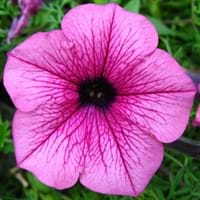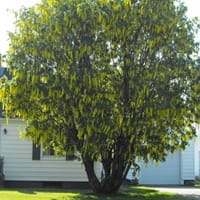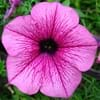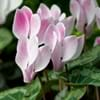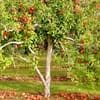Life Span
Annual
Perennial
Type
Flowering Plants, Shrubs
Tree
Origin
South America
Brazil
Types
Grandiflora Petunias, Multiflora Petunias, Wave Petunias, Superbell Petunias, Supertunia Petunias
Not available
Number of Varieties
Not Available
Habitat
Terrestrial
Shady Edge, Woodland Garden Dappled Shade
USDA Hardiness Zone
9-10
11-15
AHS Heat Zone
Not Available
12-10
Sunset Zone
not provided
H1, H2, 23, 24
Habit
Not Available
Upright/Erect
Flower Color
Blue, Pink, Purple, Red, White, Yellow
Yellow, Lemon yellow
Flower Color Modifier
Not Available
Bicolor
Fruit Color
Not Available
Gray Green
Leaf Color in Spring
Golden Green
Green
Leaf Color in Summer
Green
Green
Leaf Color in Fall
Green
Green
Leaf Color in Winter
Green
Green
Leaf Shape
Ovate
Compound
Plant Season
Summer
Spring, Summer, Fall
Sunlight
Full Sun, Partial shade
Full Sun, Partial Sun, Partial shade
Type of Soil
Loamy, Sandy
Loam
The pH of Soil
Neutral
Acidic, Neutral
Soil Drainage
Well drained
Average
Bloom Time
Fall, Spring, Summer
Summer, Late Summer
Tolerances
Pollution
Drought
Where to Plant?
Container, Ground, Pot
Ground
How to Plant?
Seedlings, Transplanting
Budding, Grafting, root cutting, Seedlings
Plant Maintenance
Medium
Medium
Watering Requirements
Keep the ground moist but not water-logged, Requires regular watering, Requires watering in the growing season
Average Water Needs, Do Not over Water, Keep the Soil well drained, Requires more often in extreme heat, Requires regular watering
In Summer
Lots of watering
Lots of watering
In Spring
Moderate
Moderate
In Winter
Average Water
Average Water
Soil pH
Neutral
Acidic, Neutral
Soil Type
Loamy, Sandy
Loam
Soil Drainage Capacity
Well drained
Average
Sun Exposure
Full Sun, Partial shade
Full Sun, Partial Sun, Partial shade
Pruning
Cut or pinch the stems, Do not prune during shooting season, Remove dead or diseased plant parts, Remove deadheads
Remove damaged leaves, Remove dead branches, Remove dead leaves
Fertilizers
All-Purpose Liquid Fertilizer
All-Purpose Liquid Fertilizer
Pests and Diseases
Aphids, Bacterial Blight, Caterpillars, Gray mold, Leaf spot, Powdery mildew, Root rot, Spider mites, Thripes, Verticillium Wilt, Viruses
Canker, Caterpillars, Root Pathogen
Plant Tolerance
Drought
Drought
Flower Petal Number
Not Available
Single
Fragrant Bark/Stem
Yes
No
Foliage Texture
Medium
Coarse
Foliage Sheen
Matte
Glossy
Attracts
Butterflies, Hummingbirds
Butterflies
Allergy
Not Available
allergic reaction, poisonous if ingested, Skin irritation
Aesthetic Uses
Beautification, Bouquets, Showy Purposes
Formal Garden, Used in parkland
Beauty Benefits
Not Available
Not Available
Environmental Uses
Air purification
Air purification
Medicinal Uses
Not Available
Vomiting
Part of Plant Used
Flowers
Seeds
Other Uses
Showy Purposes
Pesticide, Used as Ornamental plant, Wood is used for making furniture
Used As Indoor Plant
Yes
No
Used As Outdoor Plant
Yes
Yes
Garden Design
Bedding Plant, Container, Edging
Feature Plant, Shade Trees, Tropical
Botanical Name
Petunia
LOPHANTHERA lactescens
Common Name
Petunia
Golden Chain Tree
In Hindi
Petunia
Laburnum
In German
Petunie
Goldregen (Pflanze)
In French
Pétunia
Laburnum
In Spanish
Petunia
Laburnum
In Greek
πετούνια
Laburnum
In Portuguese
Petúnia
Laburnum
In Polish
Petunia
Złotokap
In Latin
Petunia
Laburnum
Phylum
Streptophyta
Tracheophyta
Class
Magnoliopsida
Magnoliopsida
Family
Solanaceae
Fabaceae
Clade
Angiosperms, Asterids, Eudicots
Angiosperms, Eudicots, Rosids
Tribe
Not Available
Not Available
Subfamily
Petunioideae
Faboideae
Properties of Petunia and Golden Chain Tree
Wondering what are the properties of Petunia and Golden Chain Tree? We provide you with everything About Petunia and Golden Chain Tree. Petunia doesn't have thorns and Golden Chain Tree doesn't have thorns. Also Petunia does not have fragrant flowers. Petunia has allergic reactions like Not Available and Golden Chain Tree has allergic reactions like Not Available. Compare all the properties and characteristics of these two plants. Find out which of these plant can be used as indoor plant. If you are interested to decorate your house and garden, find out aesthetic uses, compare them and select the plant which will beautify your surrounding. Along with beautification, try comparing medicinal and edible uses of Petunia and Golden Chain Tree and you can choose the plant having best and most benefits.
Season and Care of Petunia and Golden Chain Tree
Season and care of Petunia and Golden Chain Tree is important to know. While considering everything about Petunia and Golden Chain Tree Care, growing season is an essential factor. Petunia season is Summer and Golden Chain Tree season is Summer. The type of soil for Petunia is Loamy, Sandy and for Golden Chain Tree is Loam while the PH of soil for Petunia is Neutral and for Golden Chain Tree is Acidic, Neutral.
Petunia and Golden Chain Tree Physical Information
Petunia and Golden Chain Tree physical information is very important for comparison. Petunia height is 5.00 cm and width 2.50 cm whereas Golden Chain Tree height is 1,520.00 cm and width 460.00 cm. The color specification of Petunia and Golden Chain Tree are as follows:
Petunia flower color: Blue, Pink, Purple, Red, White and Yellow
Petunia leaf color: Golden Green
Golden Chain Tree flower color: Yellow and Lemon yellow
- Golden Chain Tree leaf color: Green
Care of Petunia and Golden Chain Tree
Care of Petunia and Golden Chain Tree include pruning, fertilizers, watering etc. Petunia pruning is done Cut or pinch the stems, Do not prune during shooting season, Remove dead or diseased plant parts and Remove deadheads and Golden Chain Tree pruning is done Remove damaged leaves, Remove dead branches and Remove dead leaves. In summer Petunia needs Lots of watering and in winter, it needs Average Water. Whereas, in summer Golden Chain Tree needs Lots of watering and in winter, it needs Average Water.
